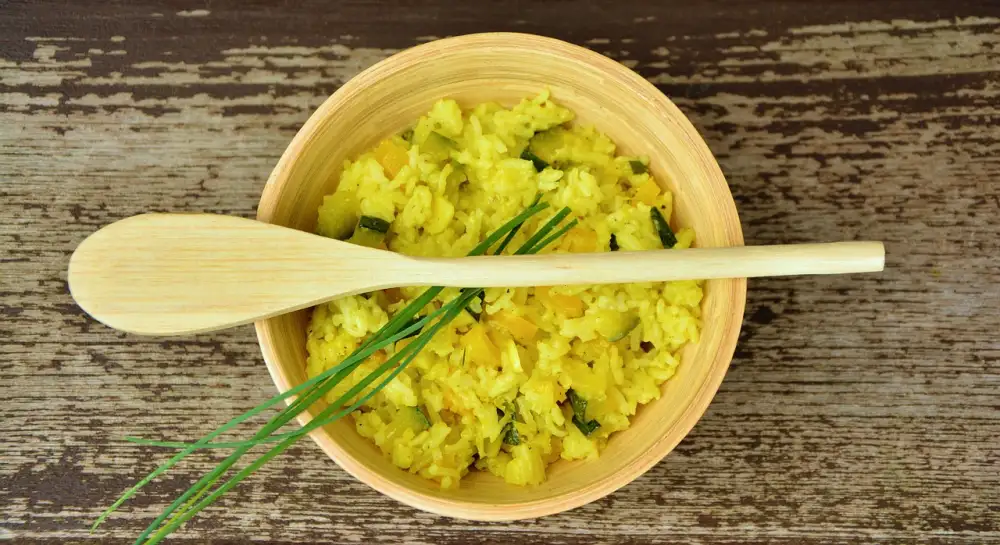Mastering Risotto Rice: Elevate Your Italian Cooking with the Perfect Grain

Risotto rice, also known as Arborio rice, is a staple ingredient in Italian cuisine renowned for its creamy and velvety texture when cooked. This short-grain rice variety hails from the Po Valley in Italy and is prized for its high starch content, which releases slowly during cooking, creating the signature creamy consistency of risotto. Unlike long-grain rice, risotto rice absorbs liquids gradually while maintaining a firm bite at the center, making it ideal for dishes where a rich and creamy texture is desired. Mastering the art of cooking risotto rice is essential for achieving authentic Italian flavors in your dishes.
Characteristics and Varieties of Risotto Rice
Risotto rice, also known as Arborio rice, is a short-grain variety that is widely used in Italian cuisine for its ability to absorb liquids and release starch, creating a creamy texture. Another popular type is Carnaroli rice, which has a higher starch content and firmer texture when cooked. Vialone Nano rice is another option, known for its ability to hold its shape well during cooking. Each variety offers a slightly different texture and flavor profile, allowing for versatility in creating various risotto dishes.
Best Practices for Cooking Risotto Rice
1. Use the right type of rice: Arborio, Carnaroli, or Vialone Nano are commonly used for risotto due to their high starch content, which creates a creamy texture.
2. Toast the rice: Before adding liquid, toast the rice in butter or olive oil to enhance its nutty flavor and help it absorb the broth evenly.
3. Add warm broth gradually: Pour warm broth slowly into the rice, stirring constantly. This gradual addition allows the rice to release starch and achieve a creamy consistency.
4. Stir frequently: Stirring helps release starch from the rice grains, creating a creamy texture while preventing sticking or burning.
5. Cook al dente: Risotto should be cooked until it is creamy with a slight bite (al dente). Overcooking can result in mushy risotto.
6. Finish with butter and cheese: Off heat, stir in cold butter and grated Parmesan cheese to enrich the flavor and add creaminess to the dish.
By following these best practices, you can master the art of cooking risotto rice and elevate your Italian culinary skills to new heights.
Tips for Choosing the Right Risotto Rice
When choosing the right risotto rice, it's essential to opt for varieties that have high starch content, such as Arborio, Carnaroli, or Vialone Nano. These types of rice are known for their ability to release starch slowly during cooking, creating the creamy texture that is characteristic of a well-made risotto. Look for rice grains that are short and plump with a high amylopectin content, as this will help the rice absorb liquid evenly and develop a creamy consistency. Additionally, consider the dish you plan to make – Arborio is great for classic risottos, while Carnaroli is ideal for more refined dishes due to its larger grains that retain a firm texture. Experiment with different varieties to find the one that best suits your taste preferences and cooking style.
Popular Risotto Recipes Using Risotto Rice
Risotto is a versatile dish that can be customized with various ingredients to create unique flavors. Some popular risotto recipes include:
1. Mushroom Risotto: A classic recipe made with Arborio rice, mushrooms, onions, garlic, white wine, and Parmesan cheese. The earthy flavor of the mushrooms pairs perfectly with the creamy texture of the risotto.
2. Seafood Risotto: This dish combines Arborio rice with an assortment of seafood such as shrimp, scallops, and mussels. The seafood adds a rich umami flavor to the creamy risotto base.
3. Lemon Risotto: A refreshing twist on traditional risotto, lemon risotto is made with Arborio rice, lemon zest, lemon juice, and fresh herbs like parsley or thyme. The citrusy flavor adds brightness to the dish.
4. Asparagus Risotto: Asparagus risotto features Arborio rice cooked with asparagus spears, onions, garlic, white wine, and Parmesan cheese. The tender asparagus adds a pop of color and freshness to the creamy risotto.
These popular risotto recipes showcase the versatility of risotto rice and how it can be used to create delicious dishes for any occasion. Experiment with different ingredients to create your own unique twist on these classic recipes!
Mastering risotto rice is essential for perfecting Italian cuisine. Understanding the characteristics and varieties of risotto rice, along with best practices for cooking it, can elevate your dishes to new heights. Choosing the right type of risotto rice is crucial for achieving that creamy, al dente texture that makes this dish so beloved. Whether you opt for Arborio, Carnaroli, or Vialone Nano, each variety brings its own unique qualities to the table. Experiment with popular risotto recipes to showcase the versatility of this humble grain and impress your guests with your culinary expertise. Remember, practice makes perfect when it comes to cooking risotto rice – so don't be afraid to keep honing your skills in the kitchen!
Published: 22. 04. 2024
Category: Recipes



